Geoengineering on NPR: “A Bad Idea Whose Time Has Come” | The Intersection
Updated: 2010-05-30 11:09:15
 Mandy writes, “I am actually a microbiologist, but my side interest is the trilobite. I went in thinking I’d just get a small black outline of a trilobite, and the tattoo artist was so excited that I wanted a trilobite, and insisted on designing something more complicated for me. So attached is a photo of [...]
Mandy writes, “I am actually a microbiologist, but my side interest is the trilobite. I went in thinking I’d just get a small black outline of a trilobite, and the tattoo artist was so excited that I wanted a trilobite, and insisted on designing something more complicated for me. So attached is a photo of [...]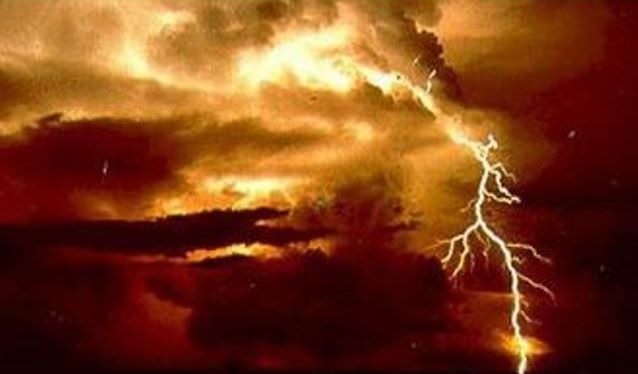 We all know that astronomy is just plain awesome – and pretty much everything that's interesting in the world links back to astronomy and space science in one way or another. Here I'm thinking gravity, wireless internet and of course ear thermometers. But wouldn't it be great if we could ascribe the whole origin of [...]
We all know that astronomy is just plain awesome – and pretty much everything that's interesting in the world links back to astronomy and space science in one way or another. Here I'm thinking gravity, wireless internet and of course ear thermometers. But wouldn't it be great if we could ascribe the whole origin of [...] Amateur astronomer Ralf Vandebergh from the Netherlands is becoming well-known for his ability to capture images of the space shuttle, space station and other satellites in low Earth orbit. Recently, he tried his hand at something a little more distant: The Keyhole 11-4 satellite, which orbits at about 600 km (360 miles) above [...]
Amateur astronomer Ralf Vandebergh from the Netherlands is becoming well-known for his ability to capture images of the space shuttle, space station and other satellites in low Earth orbit. Recently, he tried his hand at something a little more distant: The Keyhole 11-4 satellite, which orbits at about 600 km (360 miles) above [...]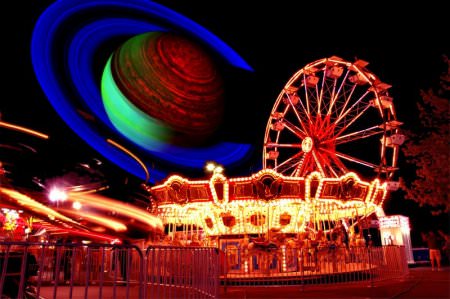 This week's Carnival of Space is hosted by Brian Schmidt over at Backseat Driving.
Click here to read the Carnival of Space #155.
And if you’re interested in looking back, here’s an archive to all the past Carnivals of Space. If you’ve got a space-related blog, you should really join the carnival. Just email an entry [...]
This week's Carnival of Space is hosted by Brian Schmidt over at Backseat Driving.
Click here to read the Carnival of Space #155.
And if you’re interested in looking back, here’s an archive to all the past Carnivals of Space. If you’ve got a space-related blog, you should really join the carnival. Just email an entry [...] , Log In Subscribe Give a Gift Archives Customer Service SEARCH Health Medicine Mind Brain Technology Space Human Origins Living World Environment Physics Math Video Photos Podcast RSS Blogs The Intersection The Coming Hurricane Season is Forecast to Be Brutal Geoengineering on NPR : A Bad Idea Whose Time Has Come” Point of Inquiry Hosts to Convene With Listeners and Students in Amherst , New York by Chris Mooney I’ve just confirmed that I’ll be joining my fellow POI hosts Karen Stollznow and Robert Price at the Center for Inquiry in Amherst , New York in late June . The occasion is the Center for Inquiry’s summer annual leadership conference , which brings in freethinking student leaders from across the country for workshops , lectures , and to finally get to know each . other This is a
, Log In Subscribe Give a Gift Archives Customer Service SEARCH Health Medicine Mind Brain Technology Space Human Origins Living World Environment Physics Math Video Photos Podcast RSS Blogs The Intersection The Coming Hurricane Season is Forecast to Be Brutal Geoengineering on NPR : A Bad Idea Whose Time Has Come” Point of Inquiry Hosts to Convene With Listeners and Students in Amherst , New York by Chris Mooney I’ve just confirmed that I’ll be joining my fellow POI hosts Karen Stollznow and Robert Price at the Center for Inquiry in Amherst , New York in late June . The occasion is the Center for Inquiry’s summer annual leadership conference , which brings in freethinking student leaders from across the country for workshops , lectures , and to finally get to know each . other This is a Very cool news: the flying infrared observatory, SOFIA (Stratospheric Observatory for Infrared Astronomy) — which has been in the works for many years — has seen first light. What’s remarkable about this observatory is that it’s mounted in a hole in the side of a 747!
Don’t believe me? Check. This. Out: [Click any of the images [...]
Very cool news: the flying infrared observatory, SOFIA (Stratospheric Observatory for Infrared Astronomy) — which has been in the works for many years — has seen first light. What’s remarkable about this observatory is that it’s mounted in a hole in the side of a 747!
Don’t believe me? Check. This. Out: [Click any of the images [...] Greetings, fellow SkyWatchers! It's a green "Corn Moon" weekend and time to get out of the house and enjoy the night sky! Enjoy sharing "Moon Illusion" with friends or simply spotting bright features with easy optics. In the mood to kick back and stargaze? The learn more about the constellation of [...]
Greetings, fellow SkyWatchers! It's a green "Corn Moon" weekend and time to get out of the house and enjoy the night sky! Enjoy sharing "Moon Illusion" with friends or simply spotting bright features with easy optics. In the mood to kick back and stargaze? The learn more about the constellation of [...] Even since amateur astronomers picked up on the orbit of the Air Force's secret X37-B space plane, others have been trying to capture images of the mini-space shuttle look-alike. So far, images have been just streaks or dots, but Universe Today reader Brent (a.k.a. HelloBozos) was actually able to image the plane in some [...]
Even since amateur astronomers picked up on the orbit of the Air Force's secret X37-B space plane, others have been trying to capture images of the mini-space shuttle look-alike. So far, images have been just streaks or dots, but Universe Today reader Brent (a.k.a. HelloBozos) was actually able to image the plane in some [...] If you need a little more awesome in your weekend, then try this: I know I’ve been posting quite a few Saturn images from Cassini, but I really like this one. It shows the big round moon Rhea, the lumpy small moon Janus, and a lovely view of the foreshortened rings. Both moons were on the [...]
If you need a little more awesome in your weekend, then try this: I know I’ve been posting quite a few Saturn images from Cassini, but I really like this one. It shows the big round moon Rhea, the lumpy small moon Janus, and a lovely view of the foreshortened rings. Both moons were on the [...] Mars or Earth? That is the question. Find the answer back at the original post for this week's Where In The Universe challenge. And check back next week for another test of your visual knowledge of the cosmos.© nancy for Universe Today, 2010. |
Permalink |
No comment |
Add to
del.icio.usPost tags:Feed enhanced [...]
Mars or Earth? That is the question. Find the answer back at the original post for this week's Where In The Universe challenge. And check back next week for another test of your visual knowledge of the cosmos.© nancy for Universe Today, 2010. |
Permalink |
No comment |
Add to
del.icio.usPost tags:Feed enhanced [...] Momma always said to pick up after yourself. Otherwise, you won’t know where your old pieces of junk will end up, and might end up confusing them with asteroids.
Astronomers have decided that a near-Earth object that passed by Earth last week is likely a rocket piece, a chunk of metal left behind in the darkness [...]
Momma always said to pick up after yourself. Otherwise, you won’t know where your old pieces of junk will end up, and might end up confusing them with asteroids.
Astronomers have decided that a near-Earth object that passed by Earth last week is likely a rocket piece, a chunk of metal left behind in the darkness [...] One of the many places I’ve been traveling to recently is a bit unusual: the Linda Hall Library in Kansas City, Missouri. For one thing, it’s a private library; like the Huntington Library in Pasadena, it’s supported almost entirely by private funds. For another, Linda Hall is completely dedicated to science, technology, [...]
One of the many places I’ve been traveling to recently is a bit unusual: the Linda Hall Library in Kansas City, Missouri. For one thing, it’s a private library; like the Huntington Library in Pasadena, it’s supported almost entirely by private funds. For another, Linda Hall is completely dedicated to science, technology, [...] Flying SOFIA has opened her eyes! The Stratospheric Observatory for Infrared Astronomy (SOFIA), a joint program by NASA and the German Aerospace Center made its first observations on May 26. The new observatory uses a modified 747 airplane to carry a German-built 2.5 meter (100 inch) reflecting telescope. "With this flight, SOFIA begins [...]
Flying SOFIA has opened her eyes! The Stratospheric Observatory for Infrared Astronomy (SOFIA), a joint program by NASA and the German Aerospace Center made its first observations on May 26. The new observatory uses a modified 747 airplane to carry a German-built 2.5 meter (100 inch) reflecting telescope. "With this flight, SOFIA begins [...] The first in a series of next-generation GPS satellites launched late Thursday from Cape Canaveral launch Complex 37 on board a Delta IV rocket. The Air Force’s Global Positioning System GPS IIF SV-1 satellite blasted off at 11 p.m. EDT on May 27, 2010, after overcoming three different launch aborts over the last [...]
The first in a series of next-generation GPS satellites launched late Thursday from Cape Canaveral launch Complex 37 on board a Delta IV rocket. The Air Force’s Global Positioning System GPS IIF SV-1 satellite blasted off at 11 p.m. EDT on May 27, 2010, after overcoming three different launch aborts over the last [...] It’s BMJ week (again) on NCBI ROFL! After the success of our first BMJ week, we decided to devote another week to fun articles from holiday issues of the British Medical Journal. Enjoy!
“Objective: To assess the evidence for a genetic basis to magic. Setting: Harry Potter novels of J K Rowling. Participants: Muggles, witches, wizards, and squibs. [...]
It’s BMJ week (again) on NCBI ROFL! After the success of our first BMJ week, we decided to devote another week to fun articles from holiday issues of the British Medical Journal. Enjoy!
“Objective: To assess the evidence for a genetic basis to magic. Setting: Harry Potter novels of J K Rowling. Participants: Muggles, witches, wizards, and squibs. [...]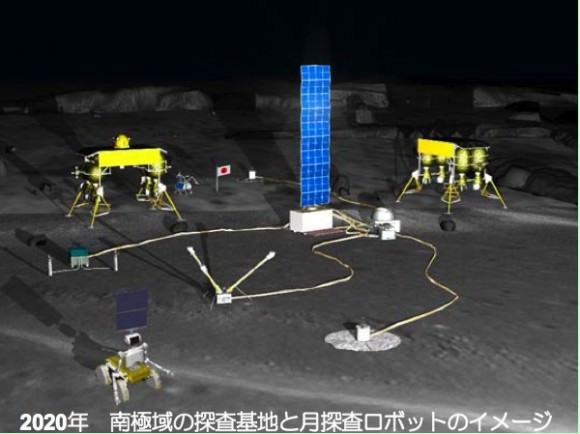 These ARE the droids we've been looking for. The Japanese space agency, JAXA, has plans to build a base on the Moon by 2020. Not for humans, but for robots, and built by robots, too. A panel authorized by Japan's prime minister has drawn up preliminary plans of how humanoid and rover [...]
These ARE the droids we've been looking for. The Japanese space agency, JAXA, has plans to build a base on the Moon by 2020. Not for humans, but for robots, and built by robots, too. A panel authorized by Japan's prime minister has drawn up preliminary plans of how humanoid and rover [...]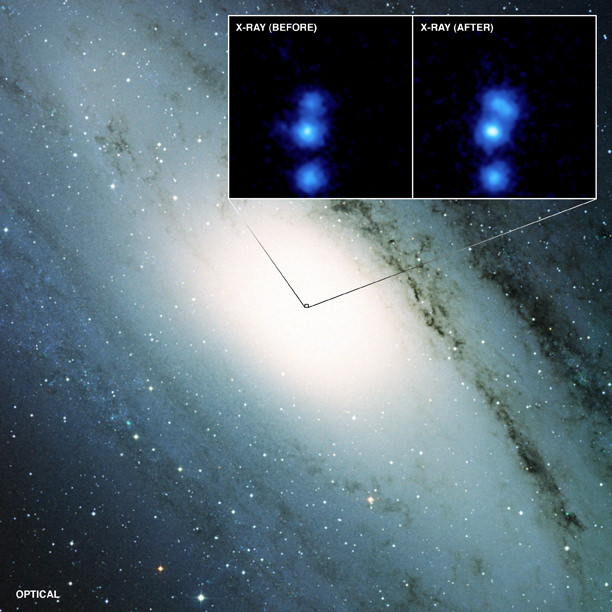 The Andromeda galaxy, the closest spiral galaxy to our own Milky Way, has a supermassive black hole at the center of it much like other galaxies. Because of its proximity to us, Andromeda – or M31 – is an excellent place to study just how the supermassive black holes in the centers of galaxies consume [...]
The Andromeda galaxy, the closest spiral galaxy to our own Milky Way, has a supermassive black hole at the center of it much like other galaxies. Because of its proximity to us, Andromeda – or M31 – is an excellent place to study just how the supermassive black holes in the centers of galaxies consume [...]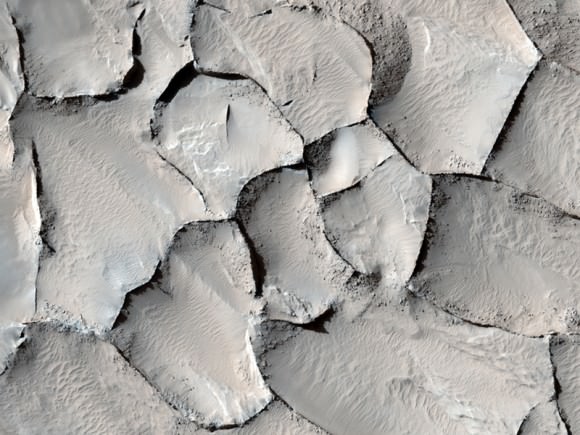 Here's this week's Where In The Universe Challenge. You know what to do: take a look at this image and see if you can determine where in the universe this image is from; give yourself extra points if you can name the instrument responsible for the image. We’ll provide the image today, but won’t reveal [...]
Here's this week's Where In The Universe Challenge. You know what to do: take a look at this image and see if you can determine where in the universe this image is from; give yourself extra points if you can name the instrument responsible for the image. We’ll provide the image today, but won’t reveal [...]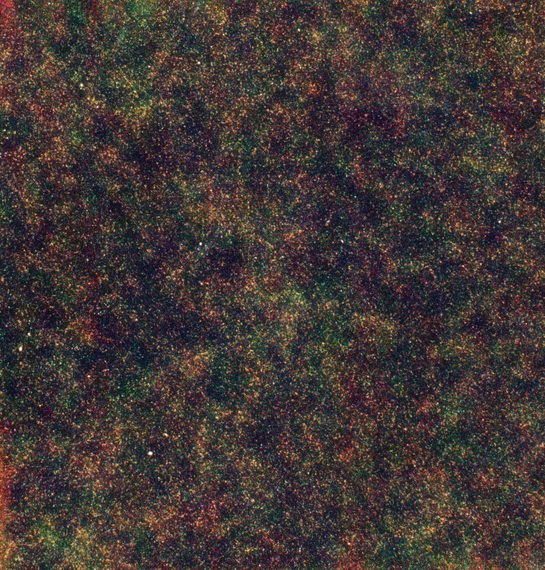 Wow. Just wow. Each of the colored dots in this new image from the Herschel telescope is a galaxy containing billions of stars. These are distant luminous infrared galaxies, and appear as they did 10–12 billion years ago, packed together like grains of sand on a beach, forming large clusters of galaxies [...]
Wow. Just wow. Each of the colored dots in this new image from the Herschel telescope is a galaxy containing billions of stars. These are distant luminous infrared galaxies, and appear as they did 10–12 billion years ago, packed together like grains of sand on a beach, forming large clusters of galaxies [...]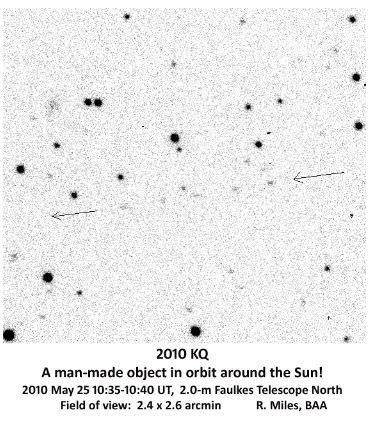 My dotAstronomy pal Edward Gomez from the Las Cumbres Observatory is reporting that a man-made object has been spotted orbiting the sun. First noticed in the Catalina Sky Survey on May 16, it was thought to be an asteroid, but then, because of its very circular and low-inclined orbit, Richard Miles, using the [...]
My dotAstronomy pal Edward Gomez from the Las Cumbres Observatory is reporting that a man-made object has been spotted orbiting the sun. First noticed in the Catalina Sky Survey on May 16, it was thought to be an asteroid, but then, because of its very circular and low-inclined orbit, Richard Miles, using the [...] At a post-landing news conference, STS-132 commander Ken Ham described the incredible visual effects the crew of Atlantis witnessed as they returned to Earth today. As the shuttle was engulfed in plasma during the hottest part of their re-entry through Earth's atmosphere, they were in orbital darkness, which highlighted the orange, fiery glow around [...]
At a post-landing news conference, STS-132 commander Ken Ham described the incredible visual effects the crew of Atlantis witnessed as they returned to Earth today. As the shuttle was engulfed in plasma during the hottest part of their re-entry through Earth's atmosphere, they were in orbital darkness, which highlighted the orange, fiery glow around [...] Our Milky Way churns out about seven new stars per year on average. More massive stars are formed in what's called H II regions, so-named because the gas present in these stellar nurseries is ionized by the radiation of the young, massive stars forming there. Recently-discovered regions in the Milky Way that are nurseries for [...]
Our Milky Way churns out about seven new stars per year on average. More massive stars are formed in what's called H II regions, so-named because the gas present in these stellar nurseries is ionized by the radiation of the young, massive stars forming there. Recently-discovered regions in the Milky Way that are nurseries for [...] Only about 1% of supermassive black holes emit large amounts of energy, and astronomers have wondered for decades why so few exhibit this behavior. Data from Swift satellite, which normally studies gamma ray bursts, has allowed scientists to confirm that black holes "light up" when galaxies collide, and the data may offer insight into [...]
Only about 1% of supermassive black holes emit large amounts of energy, and astronomers have wondered for decades why so few exhibit this behavior. Data from Swift satellite, which normally studies gamma ray bursts, has allowed scientists to confirm that black holes "light up" when galaxies collide, and the data may offer insight into [...] The shape of the two-mile-tall Texas-sized ice cap at the north pole of Mars has puzzled scientists for forty years, but new results to be published in a pair of papers in the journal Nature on May 27 have put the controversy to rest.
The polar caps of Mars have been known since the first telescopic [...]
The shape of the two-mile-tall Texas-sized ice cap at the north pole of Mars has puzzled scientists for forty years, but new results to be published in a pair of papers in the journal Nature on May 27 have put the controversy to rest.
The polar caps of Mars have been known since the first telescopic [...] David Bradley Science Writer
A new class of materials formed by combining liquid crystals and metal clusters glow intensely red in the infra-red region of the electromagnetic spectrum when irradiated over a broad range of wavelengths. The materials, dubbed clustomesogens, could be used in analytical instrumentation and potentially in display technologies.
Liquid crystals are well known in [...]
David Bradley Science Writer
A new class of materials formed by combining liquid crystals and metal clusters glow intensely red in the infra-red region of the electromagnetic spectrum when irradiated over a broad range of wavelengths. The materials, dubbed clustomesogens, could be used in analytical instrumentation and potentially in display technologies.
Liquid crystals are well known in [...] David Bradley Science Writer
A study of the shape of pumice from three adjacent submarine lava dome volcanoes in the western Pacific reveal that explosive volatility driven by the movement of molten magma is lower in deeper water. The shape of pumice stones, which are formed by expansion of magmatic volatiles as the magma rises to [...]
David Bradley Science Writer
A study of the shape of pumice from three adjacent submarine lava dome volcanoes in the western Pacific reveal that explosive volatility driven by the movement of molten magma is lower in deeper water. The shape of pumice stones, which are formed by expansion of magmatic volatiles as the magma rises to [...]